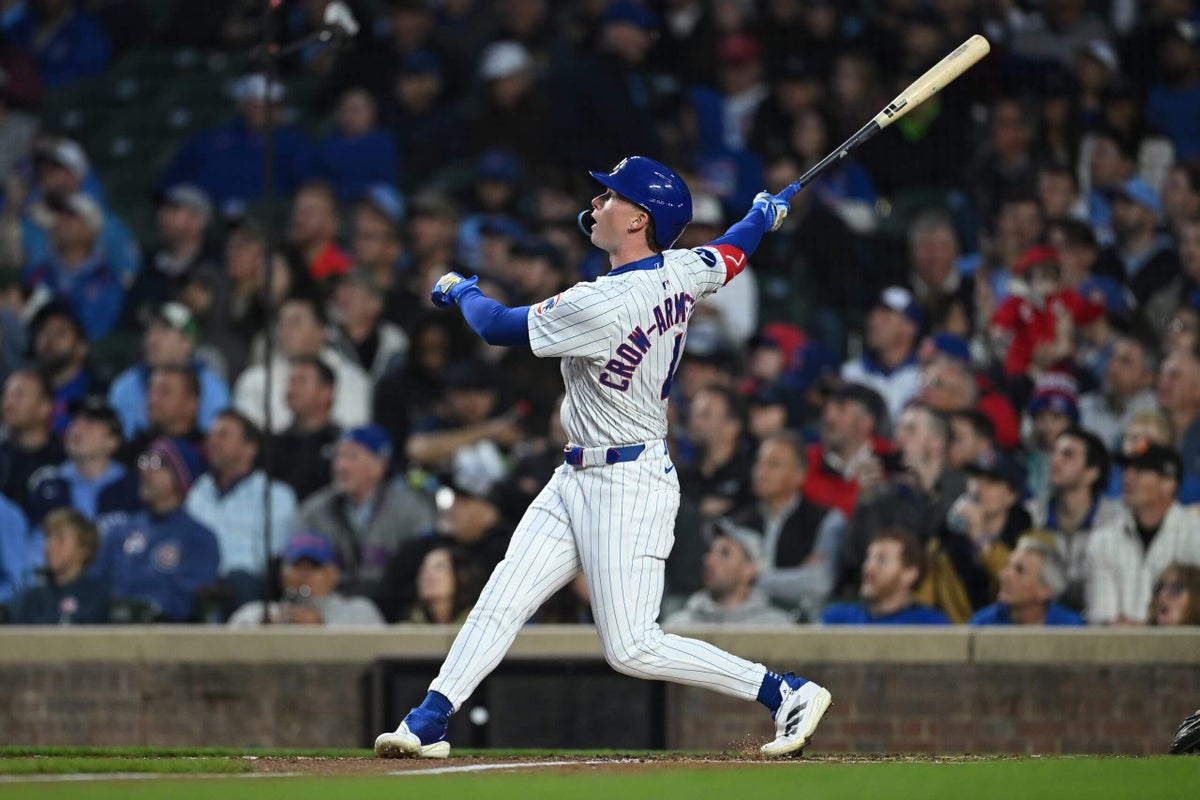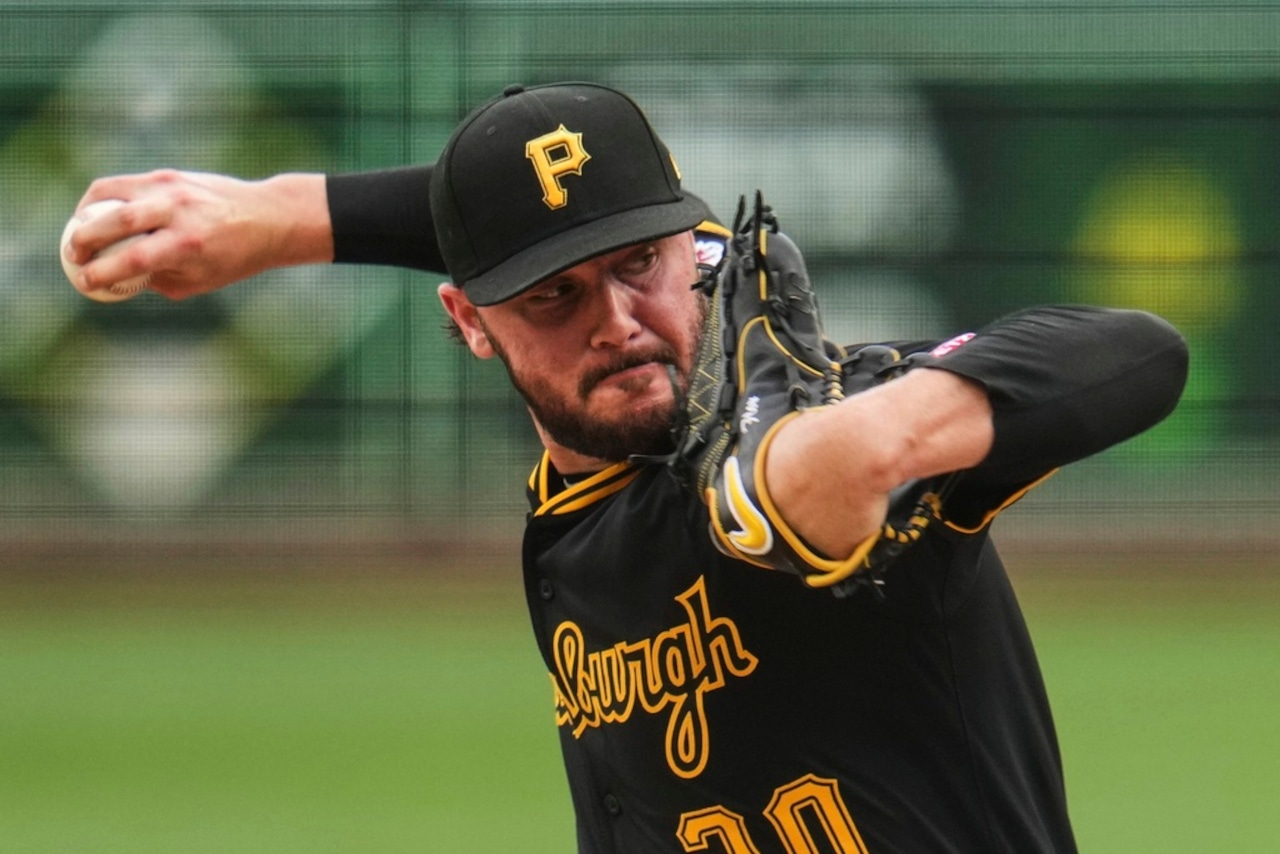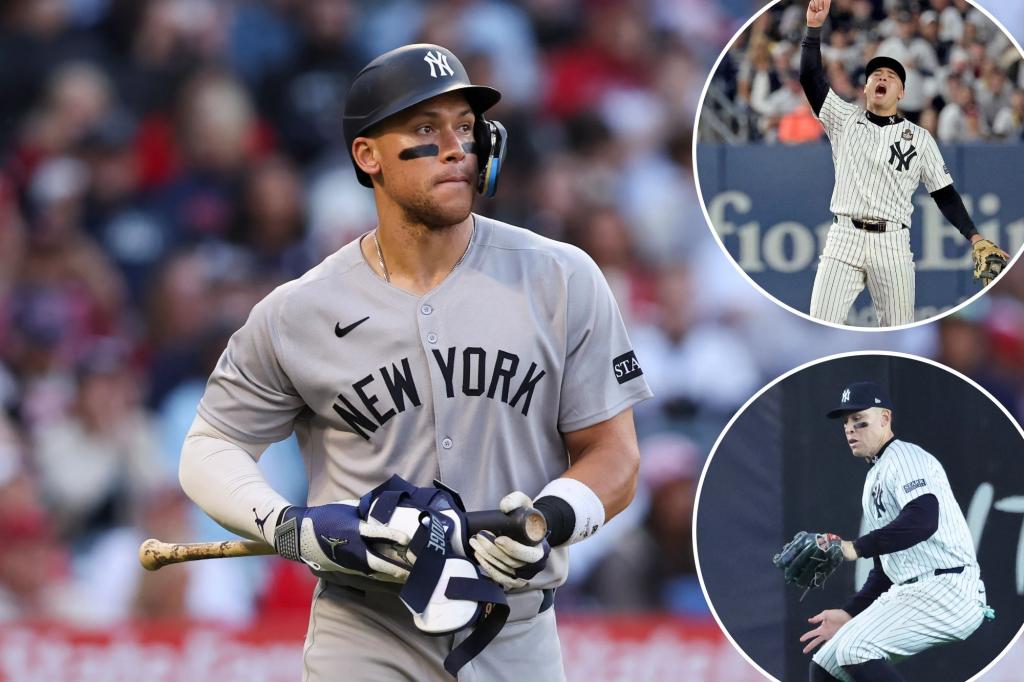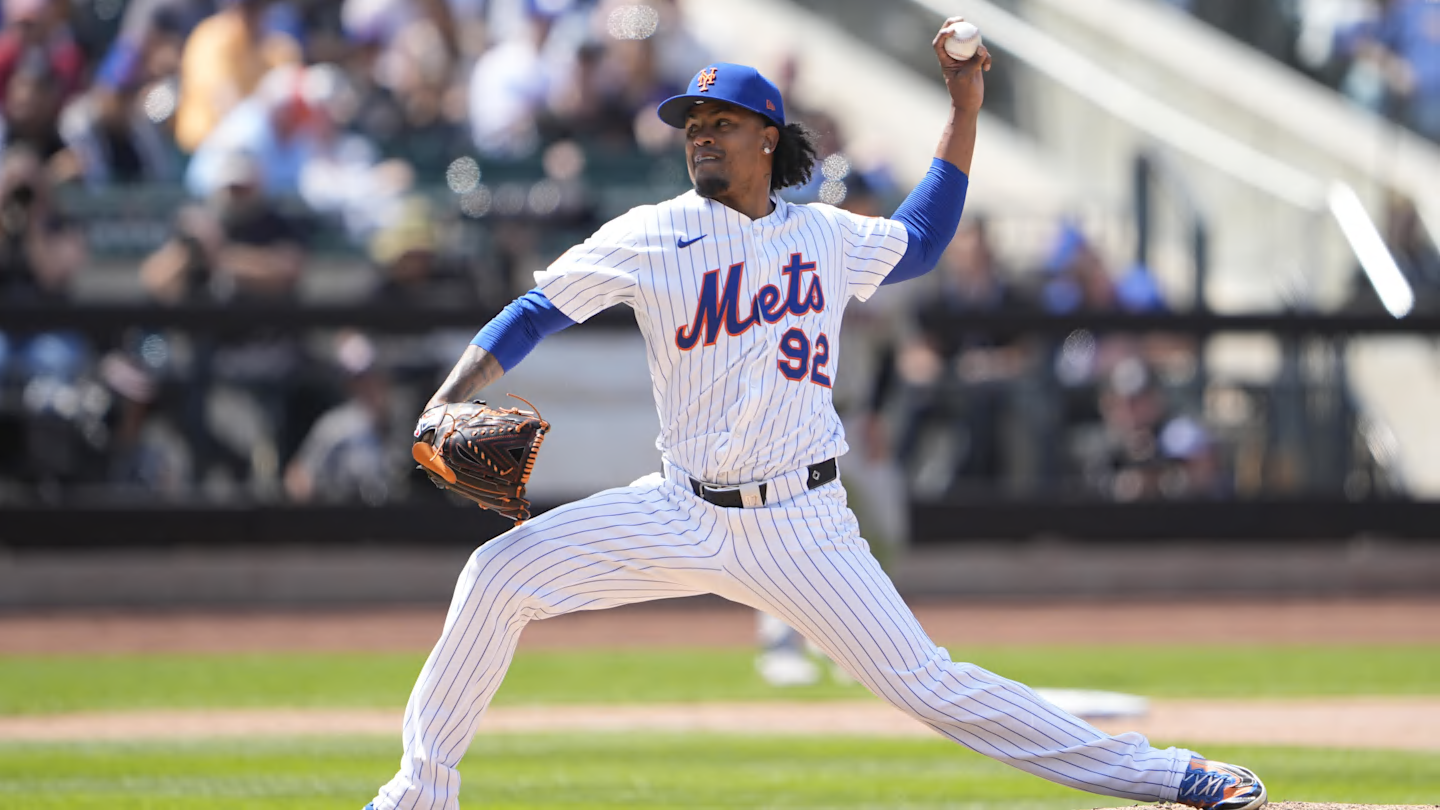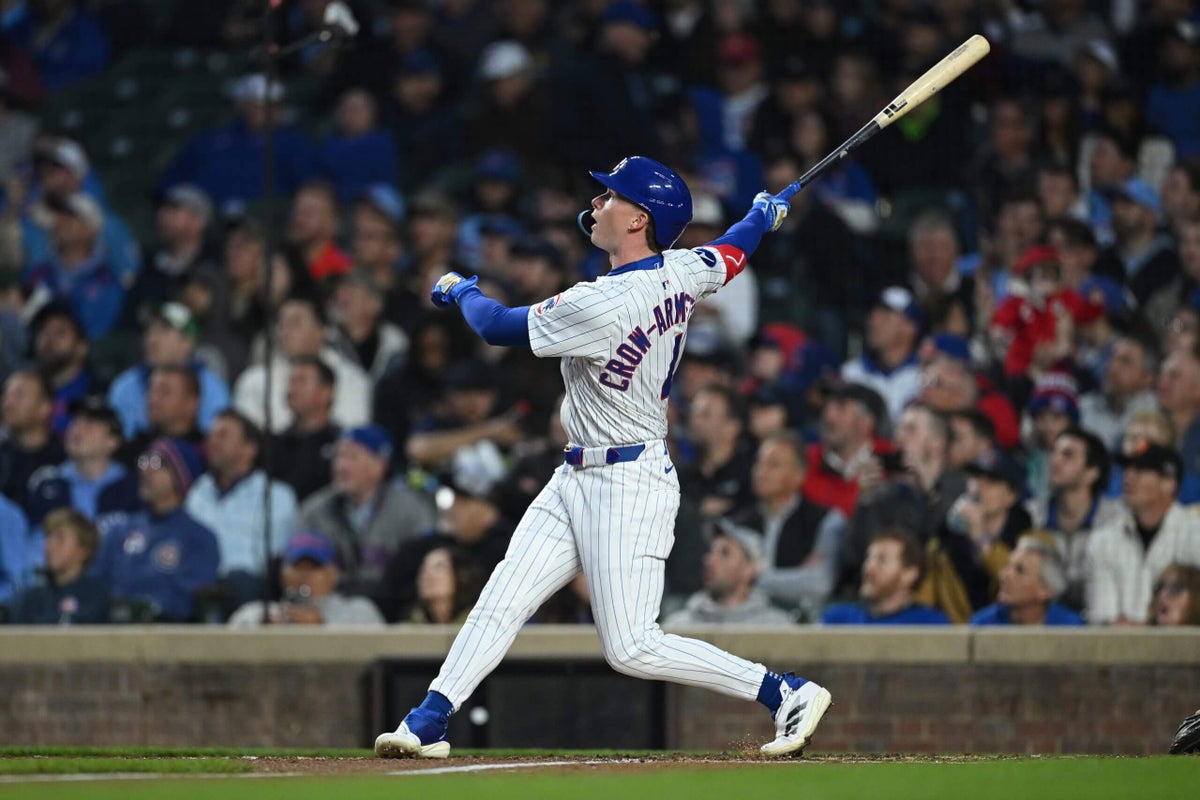
The 99th percentile outcome is happening right now for Pete Crow-Armstrong and the Chicago Cubs. Unlocking the center fielder’s power potential, to go with his speed and defense, is turning him into one of the sport’s most dynamic players. As the son of a Hollywood family, he also seems right out of central casting, an engaging star to power a first-place team and the Wrigley Field machine.
Advertisement
What happens next will be a big storyline, how Crow-Armstrong continues to make adjustments to his game and responds to the endurance test of a 162-game season. He also will have to handle the next level of fame.
“Pete’s built for this,” Cubs assistant general manager Jared Banner told The Athletic on the “North Side Territory” podcast. “He’s always believed in himself. He’s always known that this is the type of player he would be. And it’s just the rest of us that are just catching up now.”
Crow-Armstrong’s barrage of home runs continued during Wednesday night’s 2-1 victory over the Colorado Rockies at the Friendly Confines, where the Cubs swept a three-game series against the worst team in baseball. Crow-Armstrong’s 15th homer landed in the patio area in the right-field bleachers, giving him 50 RBIs before the end of May. With a total team effort, the Cubs are already 14 games above .500, but one player in particular always seems to be in the middle of the action.
Crow-Armstrong is young and confident, but he is not an overnight success. His evolution required alterations to his left-handed swing, learning how to channel his emotions, and even a few wake-up calls.
Some of these early lessons involved Banner, who previously worked with Crow-Armstrong as the executive director of player development for the New York Mets. Banner oversaw New York’s farm system when the Mets onboarded Crow-Armstrong, their first-round pick in the 2020 draft.
“It’s the first day of instructional league,” Banner recalled. “We have maybe 50 or 60 players in. And I remember we get towards the end of COVID testing, I was like, ‘Hey, is everyone done? We get everyone in?’
“Well, yeah, we got everyone in. But there’s one person missing.”
Crow-Armstrong was never going to fly under the radar. Within baseball circles, he was a widely known amateur prospect from his extensive time with Team USA and at Harvard-Westlake School, a powerhouse program in Los Angeles.
Advertisement
“We sent someone back over to the hotel,” Banner said. “We were calling him and weren’t getting any answers. Someone eventually banged on his door. You know how it is when you’re younger, you can sleep all through the morning. He definitely overslept.
“It was the first day. He’s just basically coming out of high school. It wasn’t a huge thing. But I do remember telling him: ‘Hey, this can’t happen anymore. You’re a professional now.’ ”
In hindsight, Crow-Armstrong described that moment as “the best blessing in disguise.”
“We got to know each other kind of from the jump,” Crow-Armstrong said, mentioning Banner by name as part of the support systems in two organizations that encouraged him to play with a sense of freedom.
“People have just given me the green light to go be myself, and kind of without question. I’m grateful for that, because it’s probably a different story if I am getting held back. But never once.”
we interrupt your wednesday evening with a PCA home run. enjoy! pic.twitter.com/7iYUfzLNhC
— Chicago Cubs (@Cubs) May 29, 2025
During that brief overlap with the Mets — Banner joined the Cubs in December 2020 — he caught glimpses of Crow-Armstrong’s true personality and raw talents. Seeing Crow-Armstrong run down fly balls in center field and smash pitches with eye-popping exit velocity added texture to the evaluation, which would be filed away for later.
As a Cubs executive, Banner shared his insights with president of baseball operations Jed Hoyer before the club made the Javier Báez deal at the 2021 trade deadline. Crow-Armstrong was sidelined for almost that entire season while recovering from surgery on his right shoulder. If Crow-Armstrong had been healthy at that time, Banner said, “it’s hard to imagine” the Mets would have traded him to Chicago.
“Sometimes players can get out of sight, out of mind, a little bit, when they get hurt,” Banner said. “Obviously, they hadn’t seen him play much. But it’s hard to speak to what they were thinking at the time, because I know they really liked PCA as well. It probably had a little bit more to do with they were in first place at the time, they really needed an infielder, and they wanted Javy Báez, who was a great player in his own right. They chose to take a chance and make that deal.”
Advertisement
The Cubs initially pushed for pitching prospect Matt Allan, who was recovering from Tommy John surgery at that time. After a series of injury setbacks, Allan just recently returned to game action, going six years in between A-ball appearances. The Cubs settled on Crow-Armstrong, whose formal professional experience to that point amounted to six games at Class-A St. Lucie in May 2021.
“We had a lot of questions, and rightfully so,” Banner said. “We hadn’t seen him play in a while. Who knows the status of the shoulder at the time? But ultimately we decided there was so much talent there that it was worth the risk.”
Crow-Armstrong arrived at a time when the organization was trying to establish a new Cubs Way, overhauling many aspects of the baseball operations department, trying to find the next generation to replace the icons from the 2016 World Series team.
“Pete has a great growth mindset,” Banner said. “When he got to us, he was open to changing his swing. Now this is before he even played a game for us. He was working with (hitting instructors) Rachel Folden and Steven Pollakov down in Arizona. He made some pretty significant changes to his swing, which is not something most players are willing to do prior to failing.
“They’ve had so much success their whole life doing things a certain way, and they need to make sure, oftentimes, that it doesn’t work anymore first before doing anything. Pete was so hungry to grow and get better.”
That inner drive is harder to see than the spectacular plays that go viral on social media. But it is very much part of the “PCA” experience.
“Pete’s a unique personality,” Banner said. “As an organization, our player development staff did a great job letting him be himself. He plays the game with an edge. He’s a competitor. He gets excited about things. And he should. We’re all happy to watch him. He’s fun to watch.”
(Photo: Daniel Bartel / Getty Images)
